These national parks are on indigenous Country. I acknowledge the Traditional Custodians of these areas and their deep and ongoing connection to Country, and pay my respects to their Elders past and present.
Queensland’s long coastal stretch gets tons of visitors. And rightly so, it’s tropical and lush with white sand beaches and, especially further north, gorgeous turquoise waters.
And if you’re a beach bum, that’s exactly where I would head. But I’m no beach bum.
I like wide, open spaces. I like mountains and rugged terrain. I like desert areas (in the right season).
And that’s what the Australian Outback offers.
Having explored a lot of national parks in Queensland now (far more than I have written about here), the husband and I have lately been thinking about our favourite ones.
We usually have these discussions on hikes… What’re your Top 5 national parks? Top 5 national parks in Queensland? Top 5 national parks in Outback Queensland? and so it goes for hours…

So here we are with our list of fanastic national parks in Outback Queensland.
There is so much to discover…
Disclaimer: This post contains some affiliate links.
9 STUNNING NATIONAL PARKS IN OUTBACK QUEENSLAND TO EXPLORE
This is obviously not an exhaustive list of national parks in Outback Queensland.
It’s just our list of national parks that offer either stunning camping, spectacular scenery or fascinating windows into history. Or maybe all of it!
And being so far away from the coast, chances are that you’ll meet far fewer people.
1. CARNARVON GORGE | CARNARVON NATIONAL PARK
LOCATION: Central Queensland, ~250km north of Roma (720km from Brisbane)
ACCESS: 2WD, including caravans and camper trailers
BEST FOR: Hiking (short, day and overnight); Aboriginal rock art
MORE INFO: Ultimate guide to hiking Carnarvon Gorge
Carnarvon Gorge is simply stunning.
It is probably the best national park in Central Queensland if you love hiking. The gorge is most glorious in the early morning when the birdlife goes a little insane and the sun starts to gently warm the sandstone cliffs around you.
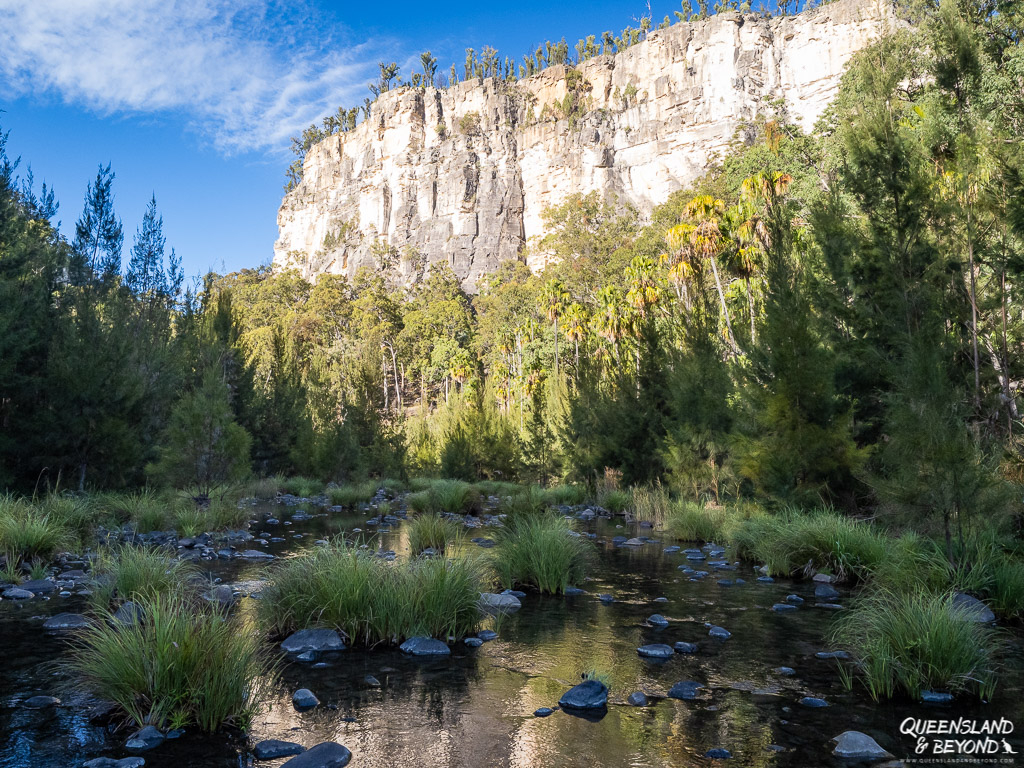
It’s such a varied place, from lush dinosaur-age ferns, Carnarvon fan palms lining the creek bed, rock formations, breathtaking vistas to incredible rock art. It’s all there.
If walking is not your thing and you prefer to hang out in a campsite, this is not your national park. You don’t come to Carnarvon Gorge for the camping, you come for the scenery beyond the campsite.
2. MOUNT MOFFATT | CARNARVON NATIONAL PARK
LOCATION: Central Queensland, ~235km north of Roma (700km from Brisbane)
ACCESS: 4WD; possible for off-road caravans and camper trailers in dry conditions
BEST FOR: Aboriginal rock art; short walks; scenic drives; early settler history; camping
MORE INFO: Complete guide to Mount Moffatt
Mount Moffatt is adjacent to Carnarvon Gorge but a round trip takes a few hours of driving. It’s all worth it though.
Like Carnarvon Gorge, Mount Moffatt is stunning but in a completely different way. It doesn’t have the same grandeur but the Aboriginal rock art at The Tombs is second to none as are the incredible views over the ranges from the High Country Drive.

The camping at Mount Moffatt is superb and you could easily while away a few days relaxing in your campsite.
3. PORCUPINE GORGE NATIONAL PARK
LOCATION: Central North Queensland, ~60km north of Hughenden (1,490km from Brisbane)
ACCESS: 2WD, including caravans and camper trailers
BEST FOR: Short walks; swimming in the gorge; camping
MORE INFO: Quick guide to stunning Porcupine Gorge National Park
Compared to some other national parks in the Queensland Outback, Porcupine Gorge is positively tiny.
But it makes up for it with beautiful swimming spots, a very photogenic Pyramid Rock and sweeping vistas over the gorge from the lookouts.
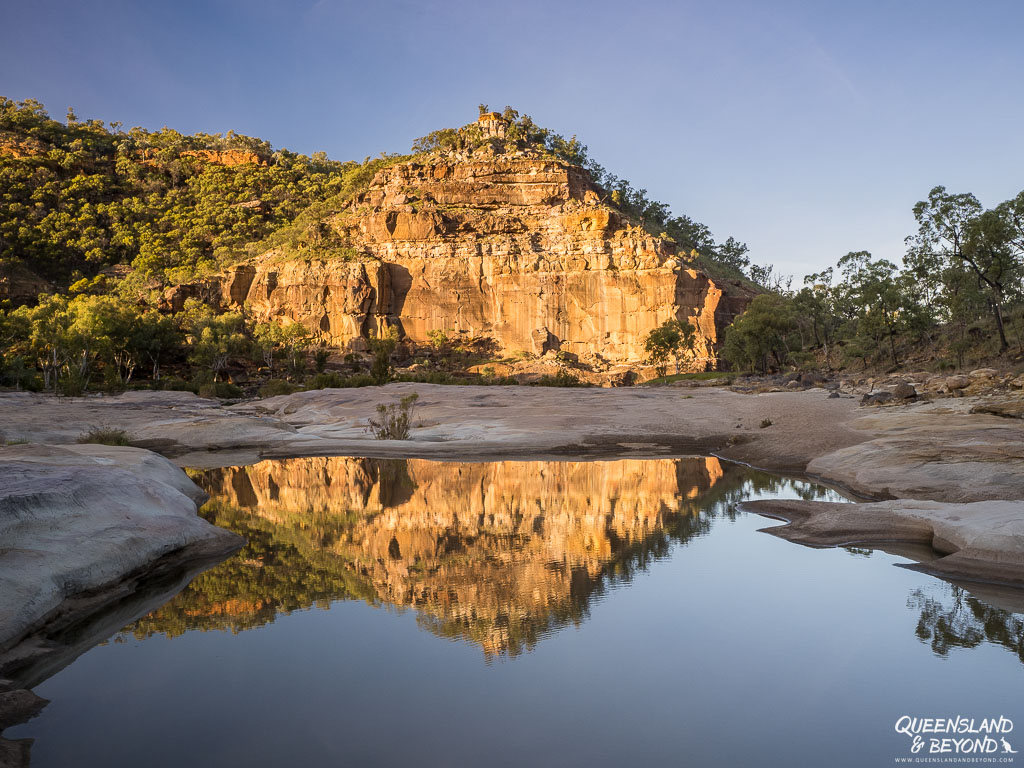
You could literally spend hours exploring the gorge, or just hang out in your campsite. While not offering much shade, the camping area is still pretty pleasant.
4. BOODJAMULLA NATIONAL PARK (ABORIGINAL LAND) {CURRENTLY CLOSED}
LOCATION: Northwest Queensland, ~320km north of Mount Isa (2,100km from Brisbane)
ACCESS: 4WD, including off-road caravans and camper trailers in dry conditions
BEST FOR: Paddling the gorge; short walks; waterfalls and swimming if you don't mind freshwater crocs; Aboriginal history and culture
MORE INFO: Boodjamulla (Lawn Hill) National Park
[The national park is currently closed for re-vegetation and redevelopment of the facilities. It is expected to re-open mid-2025.]
Severely damaged in the 2023 floods, Boodjamulla is an outback oasis.
The surrounding countryside is fairly flat and dry, and then suddenly you reach Lawn Hill Gorge and this tropical wonderland opens up.
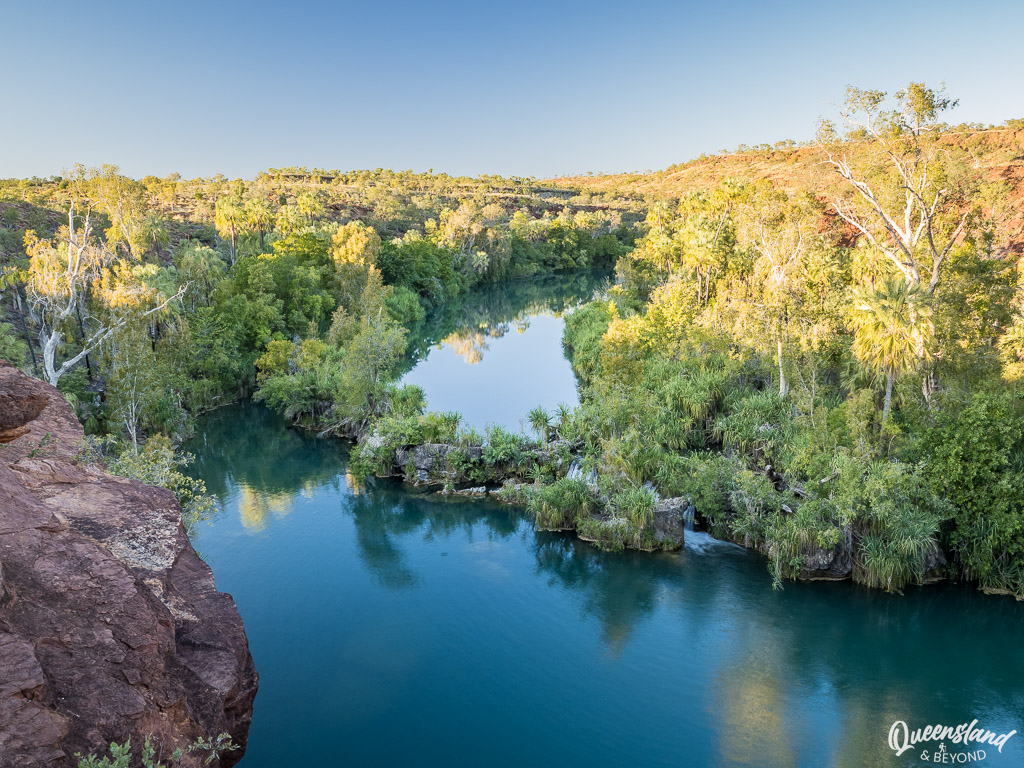
The husband had long wanted to explore Boodjamulla (having read about it in the days when 4WD magazines were your only source of information).
Initially, we were a little underwhelmed, perhaps expecting something as grand as Carnarvon Gorge. The gorge is indeed much smaller but Boodjamulla is still a beautiful little slice of God’s earth that’s well worth visiting for a few days.
5. BLADENSBURG NATIONAL PARK
LOCATION: Central West Queensland, ~20km south of Winton (1,380km from Brisbane)
ACCESS: 4WD; 2WD possible in dry conditions, including off-road caravans and camper trailers
BEST FOR: Scenic drives; early settler history; wildlife watching
MORE INFO: Guide to historic Bladensburg National Park
Bladensburg National Park is just outside Winton so it’s a bit busier than places like Welford or Diamantina National Park.
There isn’t much to do here but the old homestead offers some interesting insight into bygone times while the scenic drive takes you across varied landscapes and up to high escarpment views.
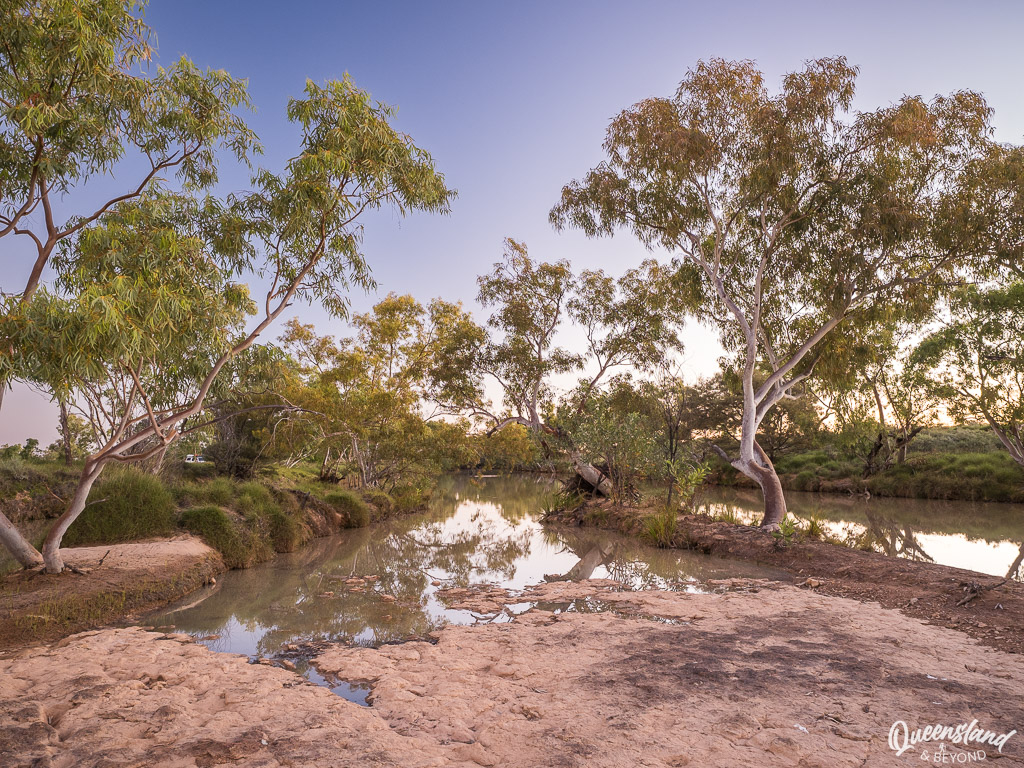
The camping area can be busy but it is quite pleasant with campsites nestled along Surprise Creek.
6. DIAMANTINA NATIONAL PARK
LOCATION: Central West Queensland, ~300km south-west of Winton (1,570km from Brisbane)
ACCESS: 4WD
BEST FOR: Scenic drives; early settler history; birdwatching; camping; outback isolation; paddling on the Diamantina River and its channels
MORE INFO: Diamantina National Park
Camping at Diamantina National Park has probably felt the most isolating of any camping experience yet. It truly is a long way from anywhere with the closest ‘town’ Boulia being around 180km away.
Birdwatching is big here and both camping areas offer ample opportunity for that being situated along waterholes.
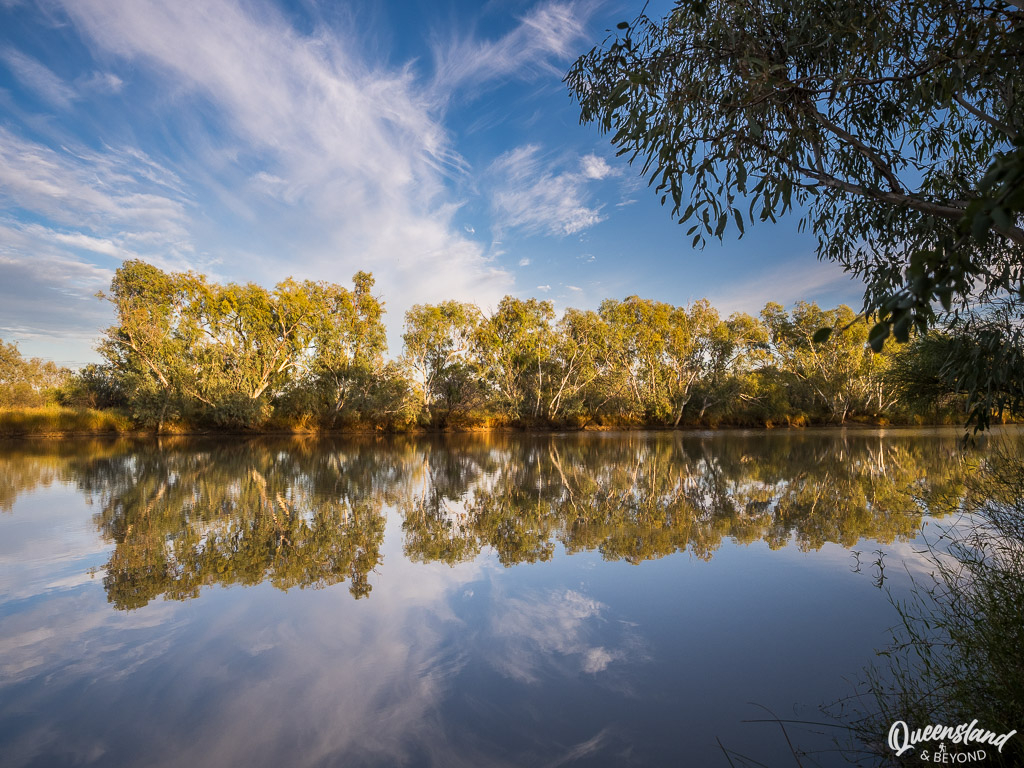
The scenic drives offer expansive views over the channel country but rain may impact how much of that you can do.
7. WELFORD NATIONAL PARK
LOCATION: Central West Queensland, ~85km east of Windorah (1,200km from Brisbane)
ACCESS: 4WD; possible for off-road camper trailers in dry conditions
BEST FOR: Scenic drives; early settler history; birdwatching; outback isolation; sunsets from sand dunes
MORE INFO: Essential guide to Welford National Park
Welford National Park really feels like you’re on the edge of the desert.
The red sand says it all, and the scenic Desert Drive does not disappoint. There aren’t any walks here (other than to a lookout that doesn’t really offer good views) but exploring the national park in your 4WD is a must.
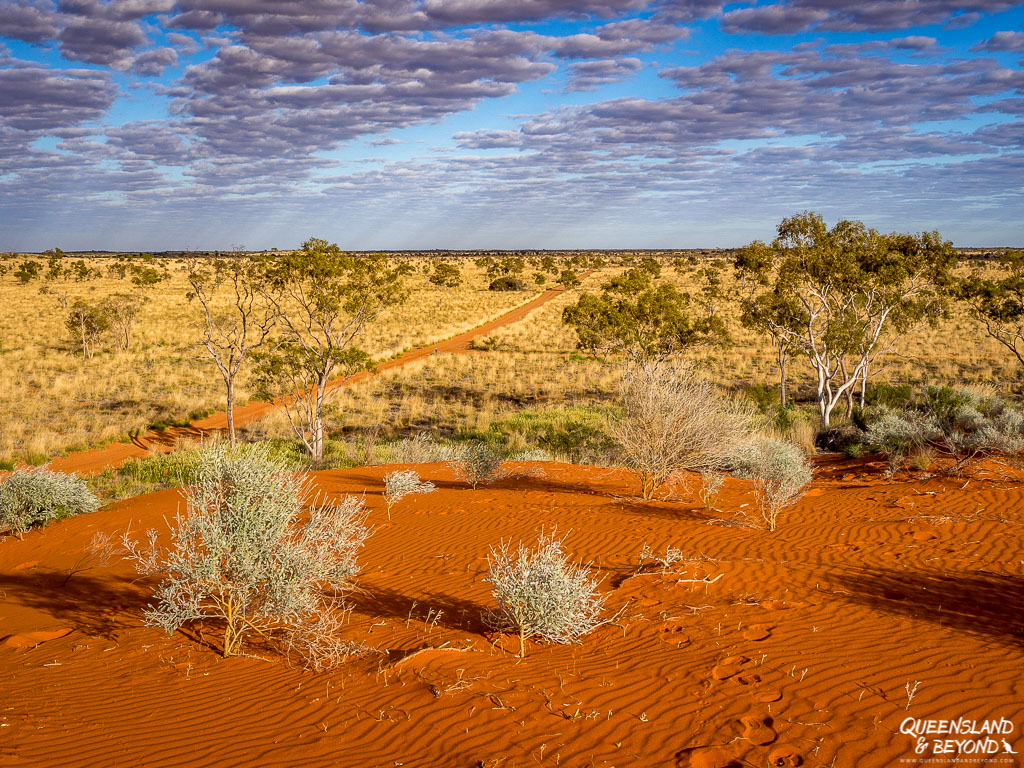
The salt pans and sand dunes make for particularly arresting scenery, and heighten that sense of isolation you only feel this far from the coast.
8. CURRAWINYA NATIONAL PARK
LOCATION: Southwest Queensland, ~180km southwest of Cunnamulla (970km from Brisbane)
ACCESS: 4WD; possible for off-road caravans and camper trailers in dry conditions
BEST FOR: Pastoral history, especially relics of equipment and buildings from sheep shearing days; scenic drives; birdwatching; paddling on the (muddy) Paroo River
MORE INFO: Currawinya National Park
Currawinya is Queensland’s largest national park, and a scenic drive across it really does take a whole day.
If you want a better understanding of what sheep shearing was once like, Currawinya should be on the top of your list. The fascinating wealth of pastoral relics, including massive woolsheds, you can find here is hard to fathom.
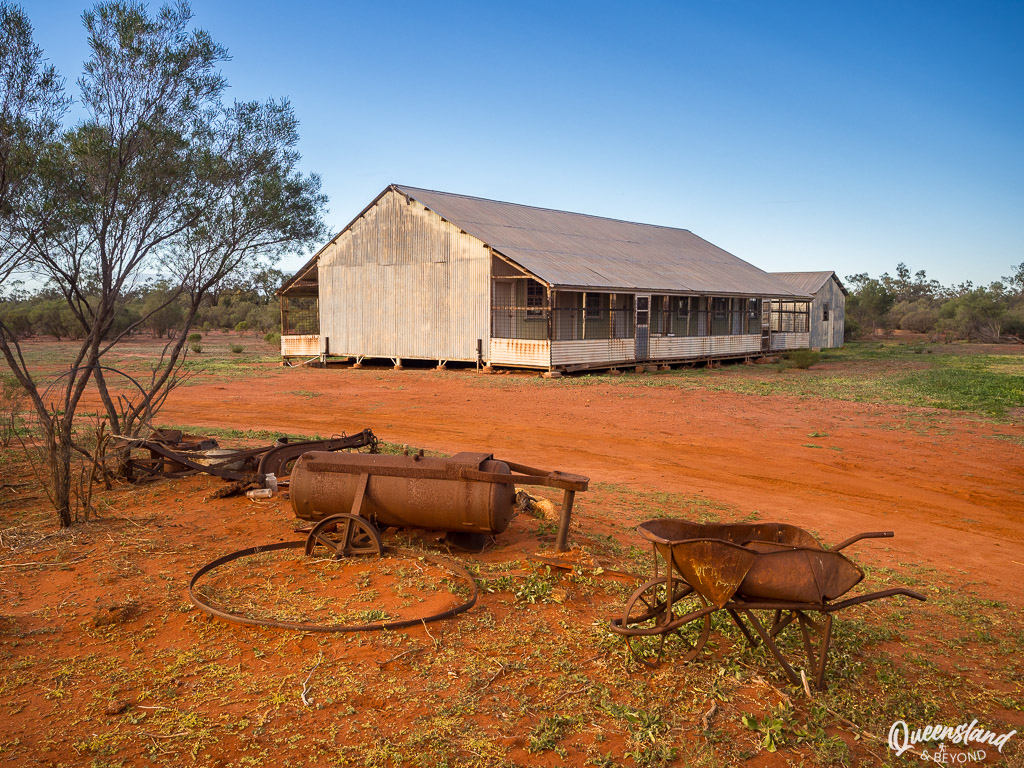
In years of heavy summer rains, there’s plenty of water, and thus birdlife, here in winter. Beware of the potential onslaught of mozzies. I caught Ross River Fever here.
9. MUNGA-THIRRI NATIONAL PARK (SIMPSON DESERT)
LOCATION: Central West Queensland, ~80km west of Birdsville (1,660km from Brisbane)
ACCESS: 4WD
BEST FOR: Camping; wildlife watching; desert scenery
MORE INFO: Munga-Thirri National Park
I feel like a list of impressive national parks in the Queensland outback wouldn’t be completed without mentioning the Simpson Desert and Munga-Thirri National Park.
Unfortunately, we still haven’t managed to do that desert crossing that we’ve been talking about for years, and the Birdsville Bakery is as close as I’ve come to the desert.
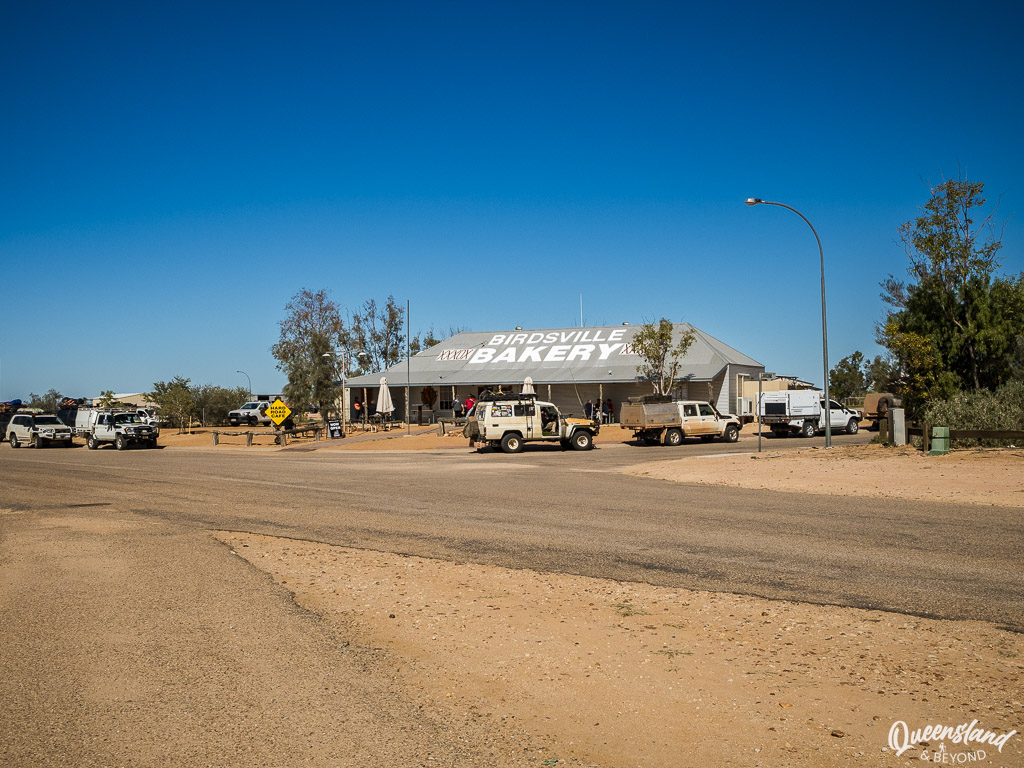
I’m sure we’ll get there one day. 🙂
TIPS FOR EXPLORING NATIONAL PARKS IN OUTBACK QUEENSLAND
All of these national parks require a bit of thought and preparation, some more than others. So before you head out on a long road trip to enjoy these beautiful spots, make sure you’ve got everything you need and then some.
Visiting Outback Queensland is no walk in the park so here are a few tips for venturing into the Queensland outback.
- Know when to travel: Visiting Outback Queensland is not a good idea over the summer months. Not only do most sights close but accommodation providers and shops may even close or offer reduced hours. National parks may also close due to extreme heat or being inaccessible. Visit in the cooler months from April to early October. Peak season is usually June to August.
- Carry sufficient fuel: We have dual fuel tanks so we can carry around 160 litres of fuel (with a range of about 1,200km depending on the roads). Our one rule is to always fill up when we hit a town / roadhouse. With all our scenic driving in national parks (and unexpected detours to the tune of 300km), we like to be prepared.
- Check road conditions: This part of Queensland can get seriously impacted by weather (rain) and is (mostly) only suitable for 4WD-vehicles, ideally high-clearance. It would be wise to check road conditions before you venture out.
- Leave gates: You’ll often be driving through properties on your way to national parks so leave gates as you find them.
- Carry sufficient water: A lot of outback national parks have no water. Plan at least 5-7L per person per day (plus extra for emergencies). Depending on our trip, we carry between 60-80 litres of water.
- Be ready for cold temperatures: In winter, temperatures can drop to around 0ºC (or less) in some parts, e.g. the desert, while other places might still be quite warm overnight, e.g. Boodjamulla. Bring clothes you can layer.
- Don’t forget sun protection: Equally, the sun can still be strong in the outback, even in winter. Don’t travel without your hat, sunnies and sunscreen.
- Expect flies: Every year is different but expect to deal with flies. Sometimes they’re really bad – so bad that we use fly nets – and other years, not so much. Expect them and if they’re not there in insane numbers, consider yourself blessed.
- Bring emergency supplies: Have a first-aid kit handy and extra food and water in case you get stranded. There’s often no mobile coverage for miles around. For peace of mind, we carry a Personal Locator Beacon (PLB) when venturing to more remote locations.
FINAL THOUGHTS
Bar the last one mentioned, as we haven’t got there yet, we’ve really enjoyed these national parks in Outback Queensland.
They are all quite different but each one has something special to offer, from deep gorges, vast plains, Aboriginal culture and heritage, early settler (and squatter) history to an abundance of birdlife and glorious sunsets.
If you’ve been to these places or want to put them on your bucket list (not that I’m a big fan of bucket lists 🙂 ), do let me know in the comments below.
Happy exploring,

SAVE TO PINTEREST
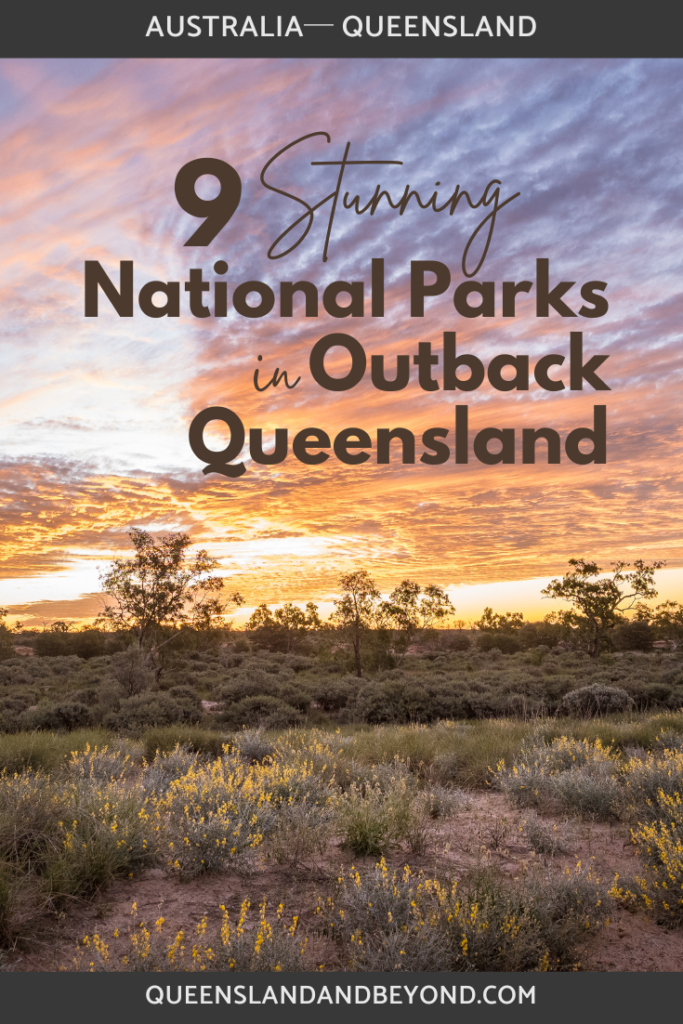
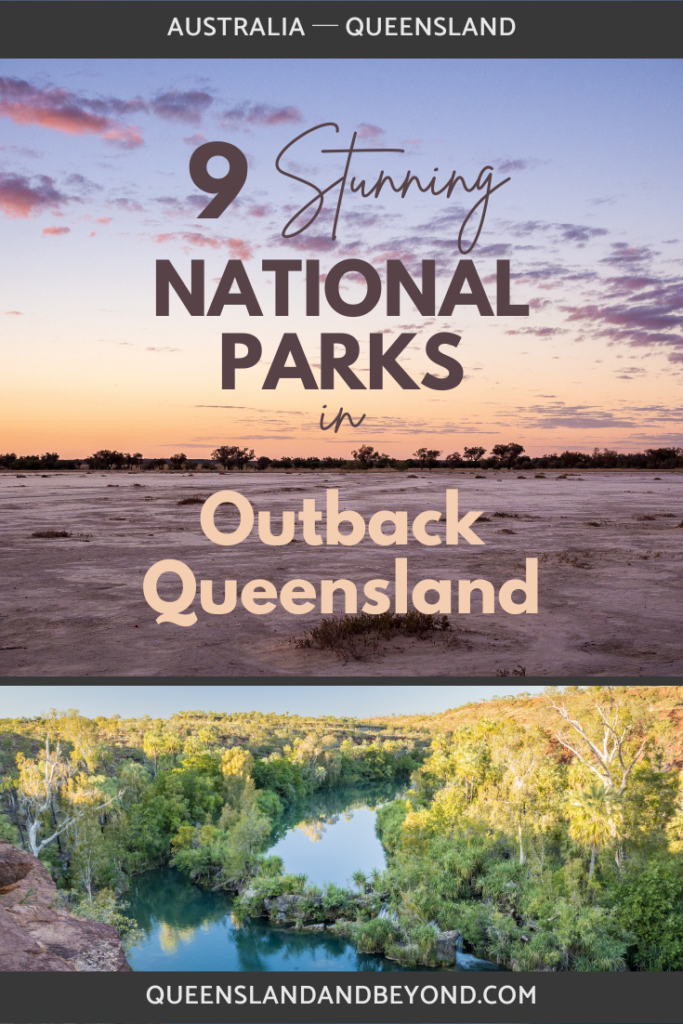





No Comments